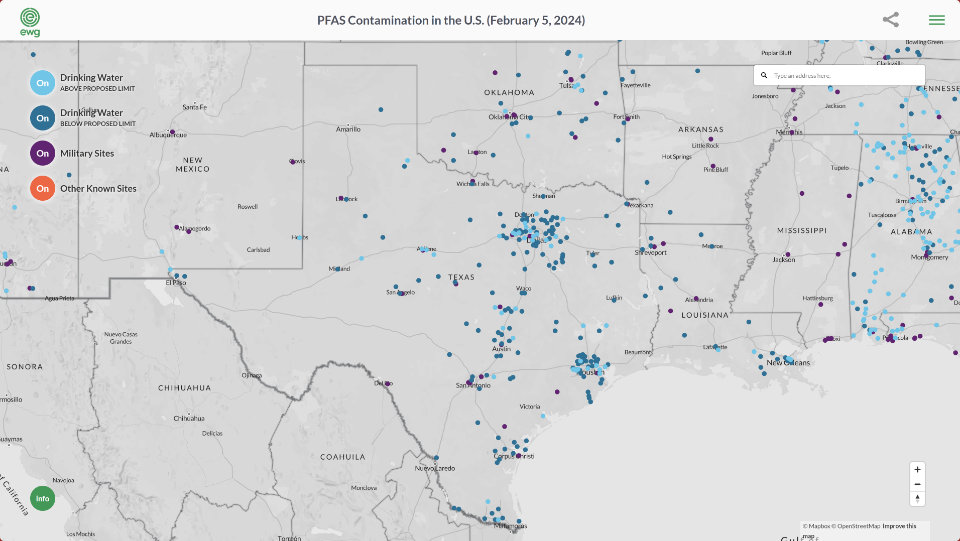
The US Navy developed the aqueous film-forming foam (AFFF) to save lives. The firefighting foam worked. However, workplace exposure to AFFF causes serious health risks. In this article, you will learn the current state of the firefighter foam injury lawsuit and how you can make your personal injury claims.
AFFF is a Class B chemical foam widely used to fight chemical liquid fires. The following locations use the AFFF firefighting foam:
Johnson Controls developed AFFF under the Tyco Fire Products brand. The firefighting foam products combine hydrocarbon foaming agents with fluorinated surfactants. All AFFF products contain per- and polyfluoroalkyl substances (PFAS).
PFAS substances are “Forever Chemicals,” which are slow to break down naturally. In 2014, the International Agency for Research on Cancer (IARC) classified PFAS chemicals as possible human carcinogens.
Watch The Interstate Technology and Regulatory Council explainer video for details on aqueous film forming foam.
Several companies manufactured AFFF products that contained PFAS chemicals. Most companies have announced plans to stop production of AFFF. Here are some of the notable manufacturers:
These companies’ production of AFFF products has had severe consequences, impacting the environment and public health. Fire service professionals have used firefighting foam products since the 1960s. However, the US government didn’t make the public aware of the danger for 50 years.
The recent revelations indicate that 3M and DuPoint were aware of the toxicity of PFAS chemicals since the 1960s. The 1960s manufacturing revelation is the reason behind the AFFF class action lawsuit. This enables plaintiffs with personal injury claims to prove negligence and liability against these manufacturers. The manufacturers of AFFF products are the defendants in the firefighting foam lawsuit.

The AFFF firefighting foam lawsuit is growing. Over 7,738 firefighting foam cases are pending for this mass tort. The Plaintiffs’ claims include personal injury, property damage, ongoing medical attention, and other economic losses.
On January 2, 2019, the Court issued a Case Management Order (CMO) in the US District Court of South Carolina. The Judicial Panel assigned all AFFF cases for Multidistrict Litigation (MDL) to the Honorable Richard M. Gergel.
Scientific studies show that PFAS chemicals cause multiple types of cancer:
Active-duty military members have the highest incidence of testicular cancer. Military bases have a long history of water contamination because of firefighting foam disposal.
The first round of test trials focuses on liver cancer and thyroid cancer plaintiffs. These bellwether trials are test cases to evaluate the jury’s response to testimony and evidence. The courts use bellwether trials to shape potential outcomes for exposed individuals seeking justice.
The MDL court scheduled the Telomer AFFF Bellwether trial for August 23, 2024. The Telomer AFFF Bellwether Trial aims to address PFAS contamination claims by water providers against AFFF product manufacturers.

Early AFFF studies indicated high exposure for civilian and military firefighters. However, the carcinogens spread throughout the community once PFAS contamination reaches drinking water sources, groundwater, or surface water. Non-firefighters have developed cancer from long-term exposure to PFAS chemicals.
The most common routes of exposure are ingestion (through water or food), inhalation, and skin contact. Numerous agencies have conducted environmental studies that detected PFAS in soil, water, and humans.
Here are two key points to consider if you’re eligible for AFFF compensation:
If you believe you meet the criteria, we recommend you act now.
Waiting too long to file a lawsuit can be detrimental to your claim.
The statute of limitation varies by state. Consult an attorney promptly if you believe you have a case.
In the AFFF firefighting foam injury lawsuit, you can seek several damages. These include both economic and non-economic compensation. Here are the main categories:
The settlement amounts in AFFF lawsuit cases vary significantly based on the individual factors of the case.
You get Chad Jones Zero-Risk Justice: You don’t pay any legal fees unless we resolve your case.
You can learn more about our transparent fees during your free case evaluation.
Firstly, it’s not too late to make your injury claim. The window of opportunity is limited. You must act now.
Gather all relevant evidence:
Remember that this information is not legal advice. We recommend you consult a board-certified attorney specializing in toxic exposure issues. Your AFFF lawsuit attorney can tailor guidance to your unique situation.
Have you had harmful exposure to firefighting foam? Contact Chad Jones Law to guide your AFFF litigation. We can assess your case for free and with no obligation. We’ll give you the best course of action.
We can help you with your firefighter foam injury lawsuit to get the justice you deserve.